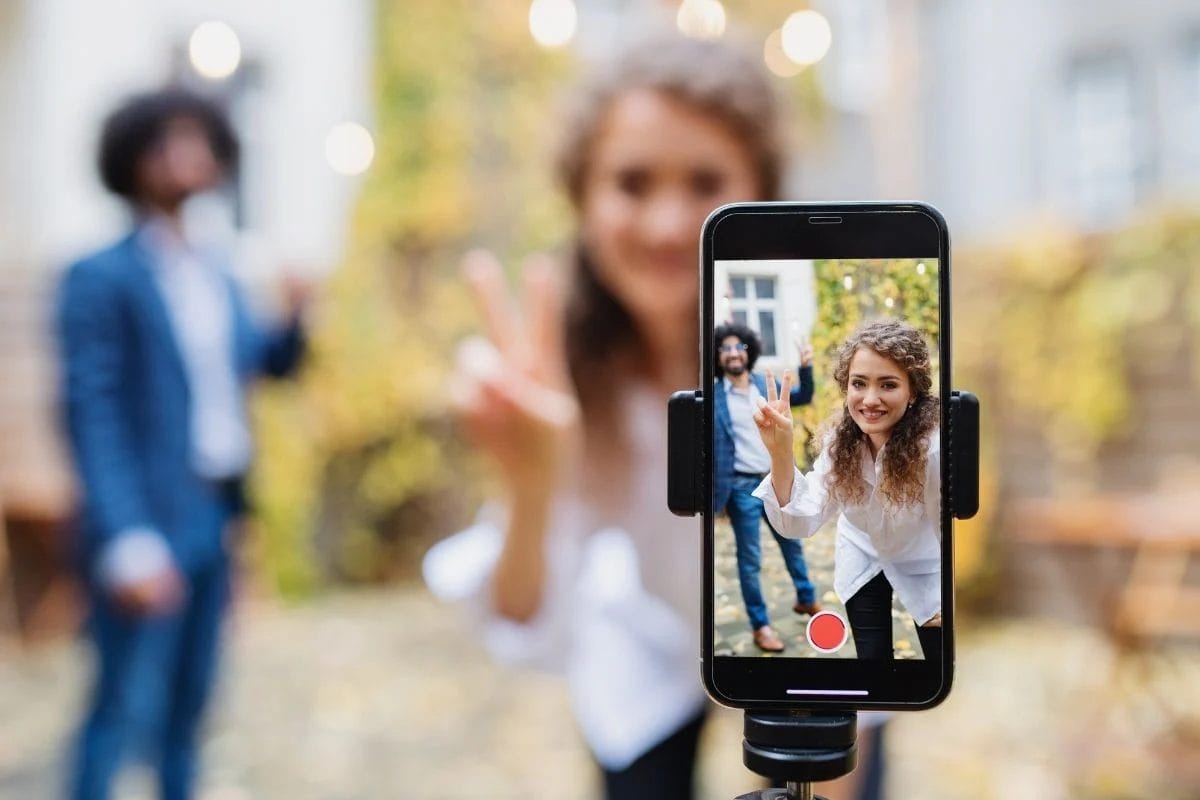Marketing, Online Business, Social
How to create Attractive Videos For The Top Social Media Platforms
- By Moshe
- No Comments
28 Oct

How to create Attractive Videos For The Top Social Media Platforms
Creating a social media video is a powerful way to engage your followers. It is eye-catching, packed with emotions, intriguing, and is by far the most popular way to grab attention. Videos can establish an emotional connection between brand and audience and give people a reason to follow, like, comment, and eventually engage your followers.
Visuals tend to leave a better imprint on audiences’ minds. These get more shares than images and text combined, and thus help you get noticed. But not everyone can create the best videos. You need to develop a few skills to make your videos stand out. Here’s the guide to creating attractive videos for social media platforms to drive the best outcomes.
Web-based media video is an amazing way of connecting with your supporters. Yet, it’s diverse on each and every stage. This is what you wanted to know to do it right.
On the off chance that you think about every one of the things you can post to online media—text, emoticons, GIFs, pictures—video is by a long shot the greatest ticket thing. It’s attractive, invigorating, and loaded with feeling. Without a doubt, a brassy pundit can pack a real issue into a little tweet, however, web-based media video consistently says as much considerably more.
Online media recordings offer looks into different universes and let crowds feel a special interaction with the individual doing the posting. That can adapt a major brand, make an item dispatch individuals, and make an outreach group fun and receptive. In the event that you use it effectively, that is
Step 1: Choose the social media platform

There is no one-size-fits-all when it comes to social media videos. Every platform has its technical limitations, and, therefore, you need to create content accordingly. Even the most experienced and tech-savvy marketer makes the mistake of posting the same content, ignoring the technical requirements of different social media channels. Hence, it is vital to select one or two platforms before creating or editing videos. This will help you develop attractive visuals to grab the audience’s attention and make your content stand out from the crowd.
There’s no question that recordings are everywhere nowadays. Indeed, even the most apparently tiresome subject has a video. As advanced advertisers, it bodes well to deliver one as well, isn’t that so? It depends. One, recordings resemble two-sided deals. They can be fortunate or unfortunate relying upon how they are utilized. Second, aimlessly posting them for bouncing into the fad will do you nothing but bad. You really wanted a reason, a subject, and an objective.
In any case, you hazard fooling around and exertion into something that might have been an effective internet-based endeavor.
Step 2: Get to know the basics
Making videos doesn’t need to be costly. Simply snatch a camcorder or utilize the one on your telephone and you’re all set. Ensure there’s a lot of light so your subjects can be seen effortlessly. There’s no compelling reason to stress with regards to altering: there are a lot of free assets on the web.
The adage ‘you can’t serve two experts simultaneously’ never rang with much more truth than in online media. Indeed, even the savviest online advertisers as a rule tragically post a similar substance over and over – overlooking how changed stages work. Prior to whipping out your camera, pick a couple of web-based media stages that will suit your mission best.
Since you have chosen the social platform now, it’s time to get into the basics to add a touch of creativity to your videos. Some of the best practices to create outstanding visuals are listed below:
- Use natural light: Never capture the shots in the dark and use natural light as far as possible. However, do not overexpose.
- Keep it simple: Make sure your visuals are easy to understand.
- Have a clear subject: It’s good to have a single focal point in your image.
- Make sure there’s enough contrast: Contrast maintains a balance between white and black environments and makes things easy to read and understand.
- Don’t over-edit: Keep things natural and subtle. Excessive use of filters and transitions can ruin your efforts.
Step 3: Keep the video specs in mind for all media platforms

Making videos doesn’t have to be expensive. Just grab a video camera or use the one on your phone and you’re good to go. Make sure there’s plenty of light so your subjects can be viewed with ease. There’s no need to worry when it comes to editing: there are plenty of free resources online.
The saying ‘you can’t serve two masters at the same time’ never rang with much more truth than in social media. Even the savviest online marketers usually make the mistake of posting the same content again and again – ignoring how different platforms work. Before whipping out your camera, choose one or two social media platforms that will suit your campaign best.
Along with the creative basics, you must know about the video specs of each platform; otherwise, you’ll end up wasting your time and efforts. Here are the specs of all top social media platforms.
- YouTube: The recommended video size is 1920×1080 pixels. The widescreen format of YouTube is 16:9, but it is very adaptable and supports most ratios.
- LinkedIn: The video size on LinkedIn ranges from 1920×1080 to 4096×2304 pixels.
- Instagram: The recommended video size on Instagram is 1080×1080 pixels.
The specs for other videos on this platform are:
- Carousel Video Ads: 1080×1080 pixels
- Vertical Video: 1080×1350 pixels
- In-Feed Video Ads: 600×500 pixels
- Stories Video Ads: 1080 × 1920 pixels
- Twitter: The suggested video size for Twitter is 1920×1200 pixels, and vertical videos are 1200×1920 pixels.
- Snapchat: The recommended video size for Snapchat is 1080×1920 pixels (vertical).
- Facebook: The standard video size is 1280×780 pixels. However, there are several video formats on Facebook with different parameters, such as:
- Facebook Messenger and slideshow video ads: 1280×720 pixels
- Collection Video Ads: 1200×628 pixels
- Facebook 360 videos: 4096×2048 pixels and 2:1 aspect ratio
- Carousel video ads: 1080×1080 pixels
Step 4: Select the best online video editor
Video editing is as important as the video creation process as you cannot post random shots and raw content on your brand’s social media page. It gives the final and refined touch to the video and makes it more presentable.
The market has several video editors that can help you out. But, make sure you select the right video editor that is easy to use, available for free and is packed with tons of readymade templates.
Making the most beautiful videos for social media platforms is to make necessary edits in the video and show off your creativity. Here’s the step-by-step procedure to edit your video to get the final result.
- Firstly, upload the images or video clips to the dashboard.
- Browse the collection of storyboard templates to find a readymade option that fits the goal or matches the look you want for your video.
- Personalize them by adding texts, applying filters, inserting the desired music or brand logo, etc.
- Once you are done with this, save the edited version of the video and upload it to your social media handle.
Step 5: Create a video telling a compelling story to inspire your audience

Now, it’s time to take the final shot. Creating a video involves choosing a suitable theme, and ensuring that the content is inspirational and engaging. This has nothing to do with the professional-grade gear or expensive equipment.
Get ready with the exciting story you want to present in just 3 to 10 minutes for YouTube and 6 seconds to 2 minutes for Instagram/ Facebook/ Twitter. Making shorter videos are more challenging due to time constraints. It is where creativity and resourcefulness play a considerable role.
Take the best shots, so that you spend less time while editing. Use natural light to get clear images. Remember to capture the shots at least 2 – 3 times so that you have enough content to play around with at the time of editing.
How Social Media Video Differs Based on the Network
Every online media website has its idiosyncrasies and treats video in an unexpected way. Most lean toward widescreen design (stories put together with respect to applications like Snapchat are the exemption) and a screen goal of generally 1920×1080 pixels, however, the similarities end there.
Conclusion
It very well may be someplace your image or organization has a ton of devotees. Or then again maybe an objective stage you anticipate infiltrating for another venture.
Regardless of whether recordings are the eventual fate of computerized advertising is yet to be seen. Yet, at this moment, it’s positively perhaps the best type of content to process. As it’s a combination of visuals and sounds, it’s certainly a more powerful type of correspondence than simple text or pictures. What’s more, recordings are upheld by practically any stage on the Web. You can even ‘Nail’ them to Pinterest!
The importance of creating visual content cannot be understated. These videos can instantly grab the audience’s attention and stay with them for a long time. But keep in mind that social media videos are like double-edged swords.
While a good video can level up your marketing strategy, a purposeless one can ruin your existing reputation. Never blindly post any video just to be part of the rat race. Use the tips mentioned above to create stunning visuals and meet your brand goals effectively.
Helping thousands of people to automate their dropshipping business. Skilled in Marketing Management, Advertising, and eCommerce.
Recent Posts
 Successful Dropshipping Techniques To Succeed In Dropshippin…April 15, 2024
Successful Dropshipping Techniques To Succeed In Dropshippin…April 15, 2024 5 Best Practices For Effective Inventory ManagementApril 8, 2024
5 Best Practices For Effective Inventory ManagementApril 8, 2024 How Many Products Should I Start With Dropshipping?April 7, 2024
How Many Products Should I Start With Dropshipping?April 7, 2024 Know the Best Product Research Tools for DropshippingApril 4, 2024
Know the Best Product Research Tools for DropshippingApril 4, 2024 Wix Dropshipping: The Ultimate Guide to Starting a Thriving …April 3, 2024
Wix Dropshipping: The Ultimate Guide to Starting a Thriving …April 3, 2024





Moshe